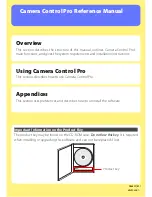
Deployment Solution
50
Installing and Configuring Automation
An embedded partition doesn’t create an actual disk partition, it reserves space on an
existing partition by marking the sectors on the disk as unusable. The target drive must
have an existing partition before an embedded partition can be installed.
A hidden partition creates an actual disk partition, but this partition is hidden from
normal view within the production system, though it is still viewable by FDISK or by an
administrator. The partition is listed as a non-DOS partition.
When a computer using an automation partition is assigned jobs, the Master Boot
Record (MBR) of the computer is modified to boot to this hidden partition. After the work
is completed, the MBR is restored to the previous configuration.
Hidden partitions are very useful for computers which are imaged often, such as those in
a test lab or provided for general use (such as a hotel or a library). After the visiting
person is done using this computer, you may want to quickly re-image to ensure that
the next visitor finds the computer in good working order. In these circumstances, a
hidden partition enables you to quickly restore an image without needing access to a
high bandwidth network.
Automation partitions can be installed using an installation package deployed from DS
(windows only), or installed from a CD, USB device, or floppy. This is different than
using boot media to access automation, because the automation partition media is used
once per computer to install, later the partition is used to perform tasks.
Using boot media to access automation doesn’t leave any files on the computer, but the
media must be used each time you want to access automation.
Configuring Boot Media (DVD/CD, USB device, Floppy)
Creating and using boot media is a straightforward process. Boot media boots a
managed computer to automation without leaving any files on the computer, and can be
installed to DVDs, CDs, USB devices, or floppy disks.
Boot media is created directly from the Boot Disk Creator utility.
Deploying Automation to Managed Computers
Automation partitions and boot media configurations are created using the Boot Disk
Creator utility. PXE configurations are created using the PXE configuration utility.
This difference is due to the way in which the automation operating system is deployed
to the managed computer. Automation partitions and boot media use install packages or
boot disks, while PXE uses a configurable menu to provide boot options, with each
option on the PXE menu linked to a specific automation configuration.
This section contains guidelines to create PXE, automation partitions, or boot media
configurations and deploy these configurations to managed computers.
Using Automation Partitions or Boot Media
1. Install the automation operating systems you want to use, as explained in
Obtaining
and Installing WinPE, Linux, or DOS
.
2. In Boot Disk Creator, Create a new configuration. The wizard is accessed by clicking
File
>
New configuration
.
Содержание ALTIRIS DEPLOYMENT SOLUTION 6.9 SP4 - V1.0
Страница 1: ...Altiris Deployment Solution 6 9 SP4 from Symantec Admin Guide ...
Страница 40: ...Deployment Solution 40 What is Automation z Which Automation Operating System Should I Use page 44 ...
Страница 144: ...Altiris Deployment Solution from Symantec User s Guide 144 ...
Страница 371: ...Altiris Deployment Solution from Symantec User s Guide 371 ...
















































